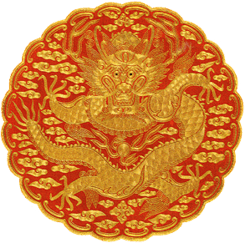First Manchu invasion of Korea
| First Manchu invasion of Korea | |||||||
|---|---|---|---|---|---|---|---|
| Part of Korean–Jurchen conflicts, Qing conquest of the Ming | |||||||
| |||||||
| Belligerents | |||||||
|
Korea: Joseon dynasty China: Ming dynasty | Later Jin, Manchu | ||||||
| Commanders and leaders | |||||||
|
Korea: Jeong Bong-su Yi Rip Jang Man Kim Sang-yong China: Mao Wenlong |
Amin Gang Hong-rip Jirgalang Ajige Yoto Li Yongfang 李永芳 | ||||||
| Strength | |||||||
| Unknown | 30,000 | ||||||
| First Manchu invasion of Korea | |
| Hangul | 정묘호란 |
|---|---|
| Hanja | 丁卯胡亂 |
| Revised Romanization | Jeongmyo-Horan |
| McCune–Reischauer | Chŏngmyo-Horan |
The first Manchu invasion of Korea occurred in 1627, when Hong Taiji led the Manchu army against Korea's Joseon dynasty. It was followed by the second Manchu invasion of Korea.
Background
Joseon helped Ming China with 10,000 soldiers when Ming China attacked Manchurian Later Jin under Nurhaci in 1619, but Korean General Gang Hong-rip surrendered to Nurhaci. Gang insisted that Korea did not hold anything against the Manchus and that he sent reinforcements only to repay an obligation to Ming.
In Korea, the Western faction deposed the realist King Gwanghaegun (Hangul: 광해군, Hanja: 光海君) and installed King Injo in 1623. This faction took explicit pro-Ming, anti-Manchu policies. In addition, Ming Mobile Corps Commander Mao Wenlong (Hanja: 毛文龍) engaged in guerrilla warfare, based in an island off the Korean peninsula.
The first Manchu expedition was triggered by Yi Gwal's rebellion against King Injo in 1624. The revolt was soon crushed but remnants fled to Manchuria. They recommended Hong Taiji to invade Korea.
War
In 1627, Hong Taiji dispatched Amin, Jirgalang, Ajige and Yoto to Korea, guided by Gang Hong-rip and other Koreans. The Manchus managed to march deep into Korean territory. They defeated Mao Wenlong's troops but failed to capture the commander. When the Manchus advanced southward to Hwangju, King Injo fled from Hanseong (Seoul) to Ganghwa Island in panic.
Despite the favorable situation, the Manchus pushed for peace negotiations, probably because Hong Taiji was concerned about the home defence. They offered peace to Korea, which was soon accepted, despite the opposition of some anti-Manchu statesmen who failed to appreciate the strong position of Manchus. The following settlement was agreed upon in Ganghwa Island:
- Korea abandons the Ming era name Tianqi (天啓).
- Korea offers Yi Gak as a hostage as a substitute for a royal prince.
- (Later) Jin and Korea will not violate each other's territory.
Meanwhile, in Pyongyang, Amin looted the city for days before he was ordered by Hong Taji to sign the peace agreement. This agreement was more favorable to the Manchus. After the four-month expedition, the Manchu army withdrew to Mukden.
Aftermath
The two sides conducted postwar negotiations. The Manchus forced Korea to open markets near the borders because the long conflict with Ming brought economic hardship to the Manchus. Korea also returned the Warka tribe to Later Jin. The Manchus regularly exacted tribute from Korea.
The relationship between Joseon and Later Jin remained uncomfortable and bleak. While the first invasion was not as catastrophic to Korea as the second, nine years later, would be, it was bitterly resented by Confucian statesmen and scholars who believed that it was treacherous for Korea to abandon Ming China after the Chinese assistance against Japan during the Seven-Year War. This resentment was inflamed when in 1636 the Manchus demanded to change the terms of diplomatic relationship from equality to Suzerainty-Tributary. The Korean Court, dominated by anti-Manchu hawks, rejected the demand. This led to the second Manchu invasion of Korea in 1636.
